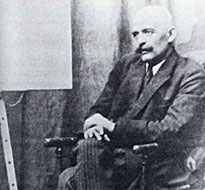| printer friendly page | |
 |
Gurdjieff transmitted the practical aspects of his teaching directly to his students and followers. The bulk of his teaching has – and continues to be – transmitted directly from one individual to another. Gurdjieff established a variety of forms for the transmission of the real means of transformation. Outwardly, those forms include group meetings, the Movements, intensive periods of practical work, and special music. But the forms are only the external framework, not the actual means of transformation. What is most important is what actually happens at a group meeting, in a movements class, and during organized practical activities such as cooking, landscaping, and construction, or in the disciplined crafts of weaving and woodworking, and not the activities themselves. These inner techniques are passed directly from one person to another through specific direction. Equally important, one's efforts are verified by those with more experience, which in turn can lead to the understanding that will enable one to deepen one's efforts. People interested in the method may be invited to a preparatory group. Eventually, the more serious people are invited to participate in regular group meetings, and later on in practical activities and the movements. Practical activities are organized as a way of studying the technique in favorable conditions. Efforts of attention, observation, and remembering are undertaken in the midst of practical tasks. Periodically, meetings are held to discuss one's efforts and then to resume work and try anew. Gurdjieff left us hundreds of sacred dances, exercises, dervishes, marches, and prayers which are collectively known as the Movements. There are classes for the practice and transmission of the Movements, which are both a unique language and a means of transformation. Only those involved in groups are invited to participate in the Movements.
|